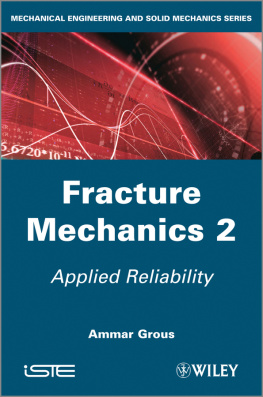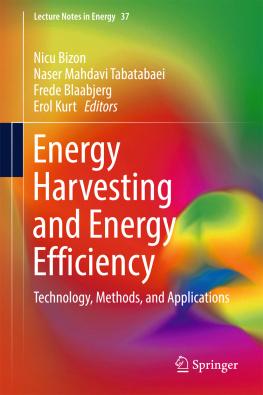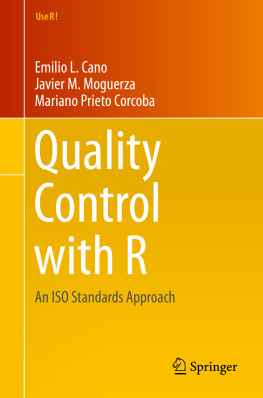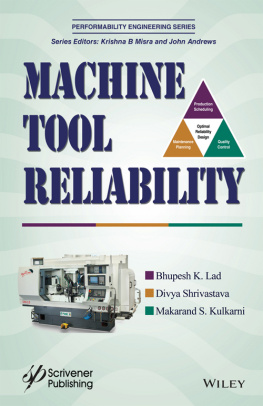Grous - Fracture Mechanics 2
Here you can read online Grous - Fracture Mechanics 2 full text of the book (entire story) in english for free. Download pdf and epub, get meaning, cover and reviews about this ebook. City: London;Hoboken;NJ, year: 2013, publisher: John Wiley & Sons, Incorporated;ISTE Ltd, genre: Romance novel. Description of the work, (preface) as well as reviews are available. Best literature library LitArk.com created for fans of good reading and offers a wide selection of genres:
Romance novel
Science fiction
Adventure
Detective
Science
History
Home and family
Prose
Art
Politics
Computer
Non-fiction
Religion
Business
Children
Humor
Choose a favorite category and find really read worthwhile books. Enjoy immersion in the world of imagination, feel the emotions of the characters or learn something new for yourself, make an fascinating discovery.
- Book:Fracture Mechanics 2
- Author:
- Publisher:John Wiley & Sons, Incorporated;ISTE Ltd
- Genre:
- Year:2013
- City:London;Hoboken;NJ
- Rating:5 / 5
- Favourites:Add to favourites
- Your mark:
- 100
- 1
- 2
- 3
- 4
- 5
Fracture Mechanics 2: summary, description and annotation
We offer to read an annotation, description, summary or preface (depends on what the author of the book "Fracture Mechanics 2" wrote himself). If you haven't found the necessary information about the book — write in the comments, we will try to find it.
Fracture Mechanics 2 — read online for free the complete book (whole text) full work
Below is the text of the book, divided by pages. System saving the place of the last page read, allows you to conveniently read the book "Fracture Mechanics 2" online for free, without having to search again every time where you left off. Put a bookmark, and you can go to the page where you finished reading at any time.
Font size:
Interval:
Bookmark:

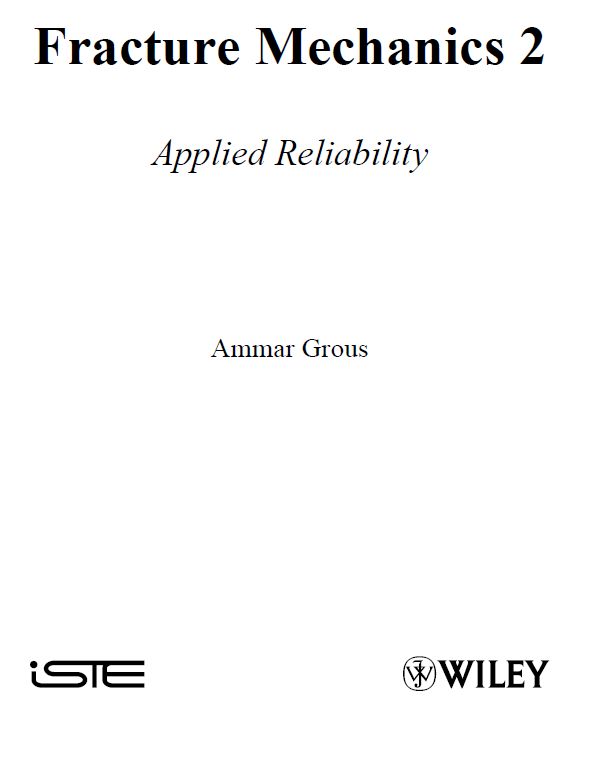
First published 2013 in Great Britain and the United States by ISTE Ltd and John Wiley & Sons, Inc.
Apart from any fair dealing for the purposes of research or private study, or criticism or review, as permitted under the Copyright, Designs and Patents Act 1988, this publication may only be reproduced, stored or transmitted, in any form or by any means, with the prior permission in writing of the publishers, or in the case of reprographic reproduction in accordance with the terms and licenses issued by the CLA. Enquiries concerning reproduction outside these terms should be sent to the publishers at the undermentioned address:
ISTE Ltd
27-37 St Georges Road
London SW19 4EU
UK
www.iste.co.uk
John Wiley & Sons, Inc.
111 River Street
Hoboken, NJ 07030
USA
www.wiley.com
ISTE Ltd 2013
The rights of Ammar Grous to be identified as the author of this work have been asserted by him in accordance with the Copyright, Designs and Patents Act 1988.
Library of Congress Control Number: 2012949779
British Library Cataloguing-in-Publication Data
A CIP record for this book is available from the British Library
ISBN: 978-1-84821-441-5

Preface
This book is intended for technicians, engineers, designers, students, and teachers working in the fields of engineering and vocational education. Our main objective is to provide an assessment of indicators of quality and reliability to aid in decision-making. To this end, we recommend an intuitive and practical approach, based on mathematical rigor.
The first part of this book shows the fundamental basis of data analysis in both quality control and in studying the mechanical reliability of materials and structures. Laboratory and workshop results are discussed in accordance with the technological procedures inherent to the subject matter. We also discuss and interpret the standardization of manufacturing processes as a causal link with geometric and dimensional specifications (GPS, or Geometrical Product Specification). This is moreover the educational novelty of this work, in comparison here with consulted praiseworthy publications.
We discuss many laboratory examples, thereby covering a new, industrial organization of work. We also use mechanical components from our own real mechanisms, which we built and designed at our production labs. Finite element modification is thus relevant to real machined pieces, controlled and soldered in a dimensional metrology laboratory.
We also discuss mechanical component reliability. Since statistics are common to both this field and quality control, we will simply mention reliability indices in the context of using the structure for which we are performing the calculations.
Scientists from specialized schools and corporations often take an interest in the quality of measurement, and thus in the measurement of uncertainties. The so-called cutting-edge endeavors such as aeronautics, automotive, and nuclear industries, to mention but a few, put an increasing emphasis on the just measurement. This texts educational content stands out due to the following:
The fracture behavior of structures is often characterized (in linear mechanics) by a local variation of the materials elastic properties. This inevitably leads to sizing calculations which seek to secure the structures derived from the materials. Much work has been, and still is, conducted in a wide range of disciplines from civil engineering to the different variants of mechanics. Here, we do not consider continuum mechanics, but rather probabilistic laws for cracking. Certain laws of statistical distributions are systematically repeated to better approach reliability.
Less severe adequation tests would confirm the fissure propagation hypothesis. In fields where safety is a priority, such as medicine (surgery and biomechanics), aviation and nuclear power plants, to mention but three, theorizing unverifiable concepts would be unacceptable. The relevant reliability calculations must therefore be as rigorous as possible.
Defining safety coefficients would be an important (or even major) element of structure sizing. This definition is costly, and does not really offer any real guarantee on safety previsions (unlike security previsions). Today, the interpretation and philosophy of these coefficients is reinforced by increasingly accurate probabilistic calculations. Well-developed computer tools largely contribute to the time and effort of calculations. Thus, we will use software commonly found in various schools (Auto Desk Inventor Pro and ANSYS in modelization and design; MathCAD, GUM, and COSMOS in quality control, metrology, and uncertainty calculations).
Much work has been done to rationalize the concept of applied reliability; however, no unified method between the mechanical and statistical interpretations of rupture has yet been defined. Some of the many factors for this non-consensus are unpredictable events which randomly create the fault, its propagation, and the ensuing damage. Many researchers have worked on various random probabilistic and deterministic methods. This resulted in many simulation methods, the most common being the Monte Carlo simulation.
In this book, we present some documented applied cases to help teachers succinctly present probabilistic problems (reliability and/or degradation). The intuitive approach takes on an important part in our problem-solving methods, and among various points, the main goal of this book is to give this humble contribution. Many commendable works and books have talked about reliability, quality control, and uncertainty perfectly well, but as separate entities. However, our task here is to verify measurements and ensure that the measurand is well-taught. As Lord Kelvin said, if you cannot measure it, you cannot improve it. Indeed, measuring identified quantities is an unavoidable part of laboratory life. Theoretical confirmation of physical phenomena must go through measurement reliability and its effects on the function are attributed to the material and/or structure, among other things.
Mechanical models (rupture criteria) of continuum mechanics discussed in Chapter 10 make up a reference pool of work used here and there in our case studies, such as the ParisErdogan law, the MansonCoffin law, S-N curves (Whler curves), Weibull law (solid mechanics), etc. We could probably (and justly) wonder in what way is this chapter appropriate in works dedicated to reliability. The reason is that these criteria are deliberately targeted. We used them here to avoid the reader having to digress into specialized books.
Next pageFont size:
Interval:
Bookmark:
Similar books «Fracture Mechanics 2»
Look at similar books to Fracture Mechanics 2. We have selected literature similar in name and meaning in the hope of providing readers with more options to find new, interesting, not yet read works.
Discussion, reviews of the book Fracture Mechanics 2 and just readers' own opinions. Leave your comments, write what you think about the work, its meaning or the main characters. Specify what exactly you liked and what you didn't like, and why you think so.

